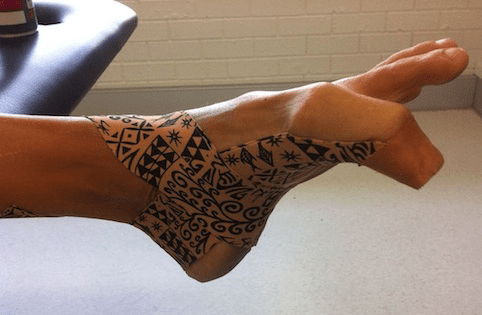An investigation into the effects of dynamic tape on time to stabilisation, foot length, foot width and navicular drop in athletes.
Evans L
University of the West of England, Hartpury College, 2018. Thesis provided.
This preliminary study looked at the effect of Dynamic Taping on foot length, foot width and navicular drop. It also looked at time to stabilisation (TTS) following a counter-movement jump as an indication of any potentially beneficial or detrimental effects of taping in this way with regards to functional stability.
The results showed that Dynamic Taping significantly influenced foot length, foot width and navicular drop compared with no tape. Sham tape (Dynamic Tape Global applied in the lengthened position) did not produce significant changes. TTS remained the same. This is an important finding as clinicians are often concerned that this taping application which effectively supinates the foot may lead to increased risk of ankle inversion injury. This preliminary study would suggest that this is unlikely however alternative applications exist and would be recommended in athletes who have a past history of ankle sprain or instability or are performing high risk activities. The alternative techniques still aim to elevate the medial and lateral longitudinal arches and the transverse arch to decelerate the navicular drop but do not target the rearfoot position like the technique used in this study.
Larger, more robust studies are required to validate these findings however this study does add support to our own in-house research which has shown that when taped correctly, navicular height changes in weight bearing of 5-10mm are common. These do not occur when taped in the lengthened position with no tension, again suggesting a mechanical mechanisms (which can be immediately seen, felt and measured when applied correctly). Please contact us if you would like to obtain the full white papers that we produced.
Furthermore, more comprehensive techniques can be used if required and clinical evidence would suggest that these result in greater and longer lasting effects.

An example of the arch support technique used in this study. Note that the resting position changes if the technique is applied correctly. The 1st MTP joint should be in flexion, the calcaneum inverted and the metatarsals should be convex on the dorsum of the foot. If these changes are not present in non weight bearing, the technique is unlikely to be applying a genuine force into the system so cannot affect kinetics let alone the kinematic changes reported in this study.

